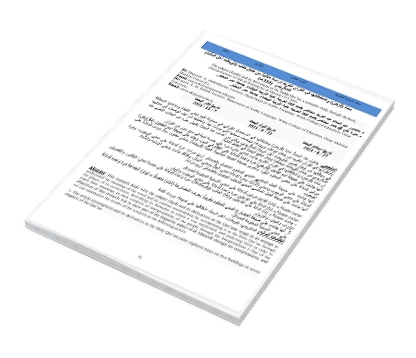The subject (Fardh) and its derivations in the Noble Qur’an, a semantic study through the book (Interpretations of Ahl al-Sunnah) by al-Matridi (333 AH)
DOI:
https://doi.org/10.37376/asj.vi3.978Keywords:
Almaturidi, Interpretations, Ahlal, Sunnah, Itsderivation on a formulam the word is recived.Abstract
This research deals with the subject (fard) and its derivatives in the Qur’anic usage in an attempt to understand the meaning of the word and its various connotations by extrapolating it in the Holy Qur’an through the places of its occurrence, describing its formulas in which it was mentioned, and analyzing them in order to reach their meanings in their contexts of interpretations of the people through the interpretations ( One of the objectives of this research was to show part of the linguistic aspect of al-Maturidi through his interpretations, and we can summarize the results of the research in the following points:
1- The article (assumption) and its derivatives in the Holy Qur’an came eighteen times on five buildings in seven chapters of the Qur’an.
2- It came to the participle noun form (fard) once to indicate advancing age, and it came to the passive noun form (imposed) twice to denote the meaning of the clear known, and the other in the form of the suspicious adjective: failah (obligatory) meaning an object six times to indicate obligation. .
3- It came in the form of the past tense of the predicate verb that is related to the pronouns four times: once to denote the meaning of obligation, and once to denote the meaning of obligation and the meaning of (came down), and once to denote the meaning of solution and the meaning of statement, and it also came in the sense of permissibility and capacity.
4- It came in the form of the past tense of the predicate relative to the pronouns four times:
- It was connected to the subject (Taa) twice to denote the meaning of the known name for the pony.
It was connected with (na), which indicates the two actors once, to denote the meaning of obligation and the statement.
- It came connected with (na) denoting the doers and (haa) absent (and we imposed it), once to denote five meanings: multiplicity, detail, compulsion, eloquence, and revelation.
5- It came on the form of the present building for the active, coupled with the present letter (Taa) and connected with (waw) the group once to indicate the meaning of the known name for the pony.
Downloads

Downloads
Published
How to Cite
Issue
Section
License
Copyright (c) 2021 Almanara Scientific Journal

This work is licensed under a Creative Commons Attribution-NonCommercial-NoDerivatives 4.0 International License.




